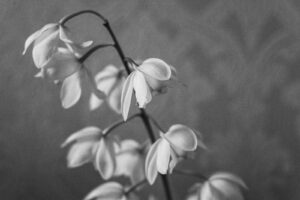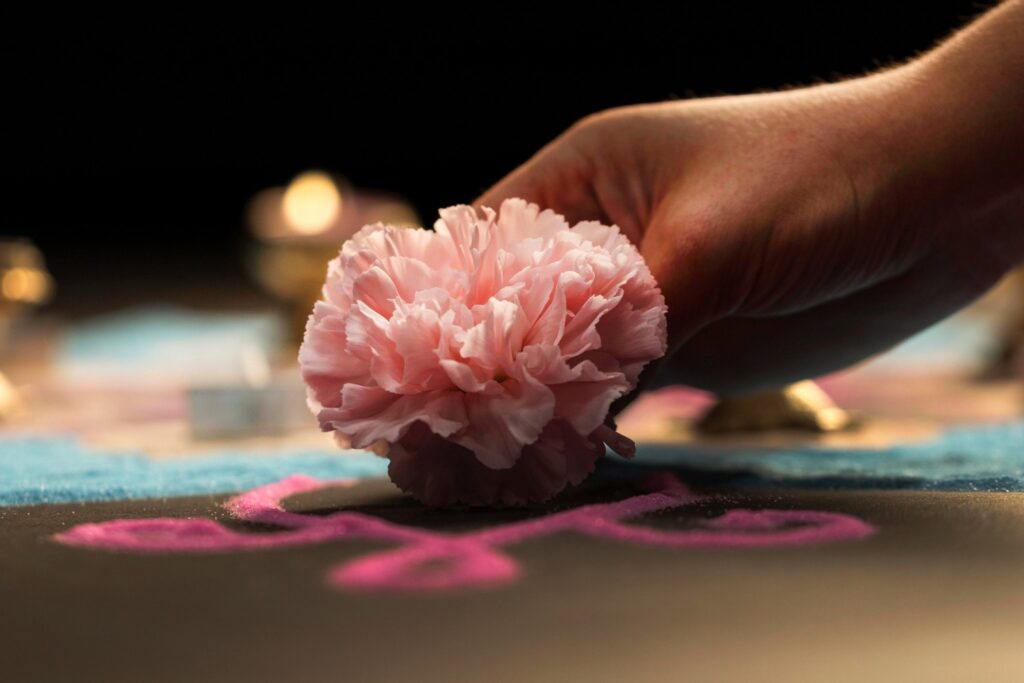Contents
- 1 introduction
- 2 Historical Context
- 3 Symbolism of the Flower
- 4 Botanical Characteristics
- 5 Cultural Depictions
- 6 Spiritual Significance
- 7 Ecological Impact
- 8 Contemporary Relevance
- 9 Conservation Efforts
- 10 Global Distribution
- 11 Ethnobotanical Uses
- 12 Scientific Research
- 13 Future Prospects
- 14 Personal Reflection
- 15 Conclusion (The Flower Of Veneration Chapter 1)
- 16 FAQs (The Flower Of Veneration Chapter 1)
- 16.1 What is “The Flower of Veneration Chapter 1” about?
- 16.2 Why is it called “Chapter 1”?
- 16.3 What can readers expect to learn from this chapter?
- 16.4 Why is understanding the symbolism of flowers important?
- 16.5 How does “The Flower of Veneration Chapter 1” contribute to conservation efforts?
- 16.6 Is this chapter based on scientific research?
- 16.7 Who might find this chapter interesting?
- 16.8 Will there be more chapters in this series?
- 16.9 Where can I access “The Flower of Veneration Chapter 1”?
- 16.10 How can I contribute to the discussion or share my insights about the topic?
- 16.11 What inspired the creation of “The Flower of Veneration Chapter 1”?
- 16.12 Can you provide examples of flowers commonly venerated in different cultures?
- 16.13 How does the concept of veneration differ from mere admiration or appreciation?
- 16.14 Are there any specific rituals or ceremonies associated with the flower of veneration?
- 16.15 What role do flowers play in traditional healing practices?
- 16.16 How do environmental factors impact the growth and proliferation of the flower of veneration?
- 16.17 Are there any folklore or myths associated with the flower of veneration?
- 16.18 How do artists incorporate the symbolism of the flower of veneration into their work?
- 16.19 What role does the flower of veneration play in contemporary society?
- 16.20 How can individuals contribute to the conservation of the flower of veneration?
- 16.21 If you found our content helpful don’t forget to share it on your social media: Twitter
- 16.22 More Articles: Home
introduction
In the intricate tapestry of nature, certain elements stand out with a captivating allure, invoking a sense of reverence and wonder. Among these, the flower of veneration emerges as a symbol of profound significance, weaving through the fabric of human history, culture, and spirituality. In this inaugural chapter, we embark on a journey to unravel the mystique surrounding this enigmatic blossom.
Historical Context
Since time immemorial, humanity has harbored a deep-seated admiration for flowers, attributing to them various symbolic meanings and spiritual significance. Ancient civilizations, from the majestic civilizations of Egypt and Mesopotamia to the philosophical realms of ancient Greece and China, revered flowers as embodiments of beauty, purity, and divine essence.
Symbolism of the Flower

The flower of veneration transcends mere botanical existence, embodying a rich tapestry of symbolic interpretations across cultures and epochs. Its delicate petals evoke notions of love, enlightenment, and transcendence, while its ephemeral beauty serves as a poignant reminder of life’s transient nature.
Botanical Characteristics
Botanically, the flower of veneration boasts a mesmerizing array of features that distinguish it from its floral counterparts. With its resplendent hues, intricate patterns, and intoxicating fragrance, it captivates the senses and enthralls the beholder. From the velvety petals of the rose to the ethereal blooms of the lotus, each species exudes its unique charm, inviting admiration and contemplation.
Cultural Depictions
Across art, literature, and folklore, the flower of veneration has left an indelible imprint on the human psyche, inspiring myriad artistic expressions and cultural motifs. From ancient cave paintings to Renaissance masterpieces, from timeless sonnets to epic sagas, its presence reverberates through the annals of human creativity, serving as a muse for poets, artists, and storytellers alike.
Spiritual Significance
In the realm of spirituality, the flower of veneration occupies a sacred space, serving as a conduit for divine communion and inner transformation. Within the contemplative traditions of yoga and meditation, it symbolizes the blossoming of consciousness and the attainment of spiritual enlightenment. In rituals and ceremonies, it serves as an offering of devotion and gratitude to the divine.
Ecological Impact
Beyond its symbolic and spiritual dimensions, the flower of veneration plays a vital role in maintaining ecological equilibrium and biodiversity. As pollinators flock to its nectar-rich blooms, it sustains fragile ecosystems and ensures the propagation of plant species. Its preservation is thus paramount to the well-being of countless organisms that depend on its existence.
Contemporary Relevance

In the modern era, the flower of veneration continues to captivate hearts and minds, albeit in diverse and evolving forms. From ornamental gardens to haute couture fashion, from botanical perfumes to culinary delicacies, its presence permeates myriad facets of contemporary culture, serving as a timeless emblem of grace and refinement.
Conservation Efforts
Despite its enduring allure, the flower of veneration faces threats from habitat loss, climate change, and unsustainable practices. Conservation efforts aimed at safeguarding its natural habitats and promoting sustainable cultivation are thus imperative to ensure its continued existence for generations to come.
Global Distribution
The geographic distribution of the flower of veneration spans continents and climates, from the lush rainforests of the Amazon to the arid deserts of Africa, from the mist-shrouded mountains of Asia to the sun-drenched plains of Australia. Its adaptability and resilience are testaments to its enduring legacy across diverse landscapes.
Ethnobotanical Uses
In indigenous cultures and traditional medicine systems, the flower of veneration has been revered for its myriad therapeutic properties and cultural significance. From the healing potions of Ayurveda to the ceremonial rituals of Native American tribes, it continues to play a vital role in promoting health, well-being, and spiritual harmony.
Scientific Research
In the realm of scientific inquiry, the flower of veneration has garnered interest for its potential applications in medicine, agriculture, and biotechnology. Ongoing research endeavors seek to unlock its secrets, from unraveling the molecular mechanisms of its medicinal compounds to harnessing its genetic diversity for crop improvement.
Future Prospects
As we stand on the threshold of a new era fraught with environmental challenges and technological advancements, the future of the flower of veneration hangs in the balance. Yet, amidst the uncertainties and upheavals of the modern world, its timeless beauty and enduring significance serve as a beacon of hope and inspiration for a brighter tomorrow.
Personal Reflection

In closing, the flower of veneration beckons us to pause and contemplate the mysteries of existence, to marvel at the intricate web of life that sustains us all. Whether gazing upon its radiant blooms in a secluded garden or pondering its symbolic meanings in the sanctuaries of the soul, may we find solace and inspiration in its eternal presence.
Conclusion (The Flower Of Veneration Chapter 1)
In conclusion, the flower of veneration stands as a testament to the enduring power of nature to uplift, inspire, and transform our lives. Across cultures, continents, and centuries, its timeless beauty and profound symbolism continue to resonate with the human spirit, reminding us of the sacred interconnectedness of all living beings.
FAQs (The Flower Of Veneration Chapter 1)
What is “The Flower of Veneration Chapter 1” about?
“The Flower of Veneration Chapter 1” is an exploration of the significance, symbolism, and cultural importance of a specific flower that holds reverence in various societies and traditions.
Why is it called “Chapter 1”?
The term “Chapter 1” indicates that this article is part of a larger series or project focusing on the flower of veneration. It suggests that there may be subsequent chapters or installments delving deeper into different aspects of the topic.
What can readers expect to learn from this chapter?
Readers can expect to learn about the historical context of venerated flowers, the symbolic meanings associated with them, their botanical characteristics, cultural depictions, spiritual significance, ecological impact, contemporary relevance, conservation efforts, global distribution, ethnobotanical uses, scientific research, future prospects, and personal reflections.
Why is understanding the symbolism of flowers important?
Understanding the symbolism of flowers provides insight into cultural beliefs, spiritual practices, and artistic expressions across different societies. It allows individuals to appreciate the deeper meanings behind floral motifs in art, literature, and rituals.
How does “The Flower of Veneration Chapter 1” contribute to conservation efforts?
By raising awareness about the ecological importance and cultural significance of the flower of veneration, this chapter encourages readers to support conservation efforts aimed at preserving its natural habitats and promoting sustainable practices.
Is this chapter based on scientific research?
While “The Flower of Veneration Chapter 1” incorporates scientific information about the botanical characteristics and ecological impact of the flower, it also explores its cultural, spiritual, and historical dimensions, drawing from diverse sources of knowledge.
Who might find this chapter interesting?
This chapter may appeal to botany enthusiasts, cultural historians, spiritual seekers, environmentalists, artists, writers, and anyone with an interest in exploring the intersection of nature, culture, and spirituality.
Will there be more chapters in this series?
The possibility of additional chapters or installments in the series depends on the reception and demand for further exploration of the topic. Readers are encouraged to provide feedback and express their interest in future chapters.
Where can I access “The Flower of Veneration Chapter 1”?
“The Flower of Veneration Chapter 1” can be accessed through the platform or publication where it is published, such as a website, blog, magazine, or academic journal. Readers can also inquire about obtaining copies or accessing digital versions through relevant channels.
Readers are encouraged to engage with the content by leaving comments, sharing their experiences or knowledge related to the flower of veneration, and participating in online forums or discussions dedicated to the subject matter.
What inspired the creation of “The Flower of Veneration Chapter 1”?
“The Flower of Veneration Chapter 1” was inspired by a fascination with the profound symbolism and cultural significance of flowers throughout history. It aims to explore the intersection of nature, culture, and spirituality through the lens of a specific venerated flower.
Can you provide examples of flowers commonly venerated in different cultures?
Flowers commonly venerated in different cultures include the lotus in Buddhism, the rose in Christianity, the cherry blossom in Japanese culture, the marigold in Hinduism, and the tulip in Persian culture, among others. Each flower holds unique symbolic meanings and cultural associations.
How does the concept of veneration differ from mere admiration or appreciation?
Veneration implies a deep sense of reverence, respect, and awe towards something considered sacred or worthy of honor. While admiration or appreciation may involve recognizing the beauty or value of something, veneration goes beyond surface-level appreciation to encompass a profound sense of reverence and devotion.
Are there any specific rituals or ceremonies associated with the flower of veneration?
Rituals and ceremonies associated with the flower of veneration vary depending on cultural and religious practices. These may include offerings of flowers in religious ceremonies, the use of floral garlands or wreaths in celebrations, and the incorporation of flowers into rituals of remembrance or commemoration.
What role do flowers play in traditional healing practices?
In traditional healing practices, flowers are often utilized for their medicinal properties, aromatic qualities, and symbolic significance. They may be used in herbal remedies, aromatherapy treatments, and ceremonial rituals aimed at promoting physical, emotional, and spiritual well-being.
How do environmental factors impact the growth and proliferation of the flower of veneration?
Environmental factors such as climate, soil conditions, habitat loss, and pollution can significantly impact the growth and proliferation of the flower of veneration. Changes in environmental conditions may affect flowering patterns, pollinator populations, and overall ecosystem health.
Are there any folklore or myths associated with the flower of veneration?
Yes, many folklore and myths surround the flower of veneration, often weaving tales of love, heroism, and divine intervention. These stories may vary across cultures, offering insights into the cultural beliefs and values associated with the revered flower.
How do artists incorporate the symbolism of the flower of veneration into their work?
Artists draw inspiration from the symbolism of the flower of veneration to create paintings, sculptures, poetry, music, and other forms of artistic expression. They may use floral motifs to convey themes of beauty, purity, spirituality, and transformation in their work.
What role does the flower of veneration play in contemporary society?
In contemporary society, the flower of veneration continues to inspire creativity, spirituality, and cultural expression. It is often used in decorative arts, floral arrangements, religious ceremonies, and wellness practices, serving as a timeless symbol of grace and beauty.
How can individuals contribute to the conservation of the flower of veneration?
Individuals can contribute to the conservation of the flower of veneration by supporting conservation organizations, practicing sustainable gardening and landscaping techniques, advocating for environmental protection policies, and raising awareness about the importance of preserving biodiversity and natural habitats.


1 Comment
Pingback: The flower of veneration chapter 1 - Step Harbor